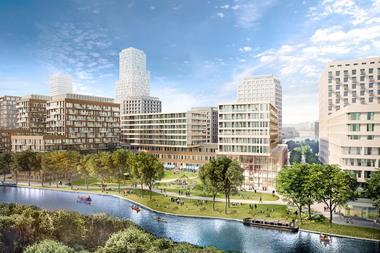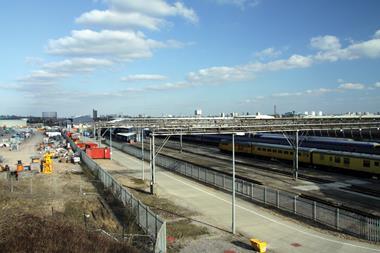It takes a lot to make me angry.

But when I see a massive opportunity to build thousands of homes and jobs in London being missed when those are the capital’s top priority, I confess my blood boils. Because that is what is happening at Old Oak Common in west London.
Several years ago, Sir Terry Farrell opened London’s eyes to a part of the city that most people simply didn’t recognise and with good reason - Old Oak Common is an industrial wasteland criss-crossed by railways. Terry produced a masterplan that builds on Crossrail and HS2, both of which meet at Old Oak, to create an interchange that 250,000 people a day will use. He showed how the site, which is as big as Canary Wharf and only three miles from Hyde Park, could accommodate 24,000 homes and 55,000 jobs - numbers that Boris Johnson frequently quotes and that the prime minister cited recently when he used Old Oak as an example of his new Commissioned Homes initiative. The trouble is that, as things stand, the vast majority of those homes and jobs are simply not going to happen.
Put simply, this is a classic example of governmental pass-the-parcel, with the Department for Transport, the mayor, HS2 and Crossrail all firmly in “Not me, guv” mode. The issue is simple. To make Old Oak work, the railways and the new depot and stabling for Crossrail, which cover a huge proportion of the site south of the Grand Union Canal, need to be decked over. Otherwise, they leave a massive hole in the heart of Old Oak, which not only means that most of the 24,000 homes will never be built, but also that the job numbers will fall by up to three-quarters. The solution is also relatively straightforward. You pile between the tracks to support a load-bearing deck. Network Rail’s own video shows CGIs of escalators taking thousands of people a day up to their 40- and 50-storey offices and homes. The project costs more than £1bn but the over-site development value is twice that.
But this is where the saga of Old Oak Common begins to look like an episode of Yes Minister, because no one wants to take responsibility for the decking. HS2 and Crossrail both say, not unreasonably, that their job is to deliver a railway on time and on budget. Their budgets don’t include decking for development. They will put a crinkly roof over their stations and make sure passengers can get from one to the other. In the case of Crossrail, the depot and stabling get the same treatment.
Neither the Treasury nor the transport secretary want to help. They say it’s the mayor’s problem and frankly they’re right. Having failed to act for so long, Transport for London now says it recognises this is a massive opportunity going to waste but it has a solution: it will build the depot and stabling as planned, but then knock them down a few years later and rebuild some or all of them somewhere else. Seriously. Setting aside the lack of an alternative site, this is just never going to happen anyway. No mayor is going to sanction disruption to Crossrail only a few years after it has opened. The service disruption would be enormous and the cost astronomic.
The reality is the job is either done now or it will never be done. Homes, jobs and valuable revenue all lost because no one wanted to grasp the nettle and sort the issue out. What we end up with is another Clapham Junction. Europe’s busiest train station it may be, but 10 yards outside and you wouldn’t know it. Clapham Junction may be a lost cause but there is still time - just - to rescue Old Oak. But only if the next mayor of London takes the issue a lot more seriously than the current incumbent.
Steve Norris is chairman of the National Planning and Infrastructure Association and of Soho Estates




























1 Readers' comment